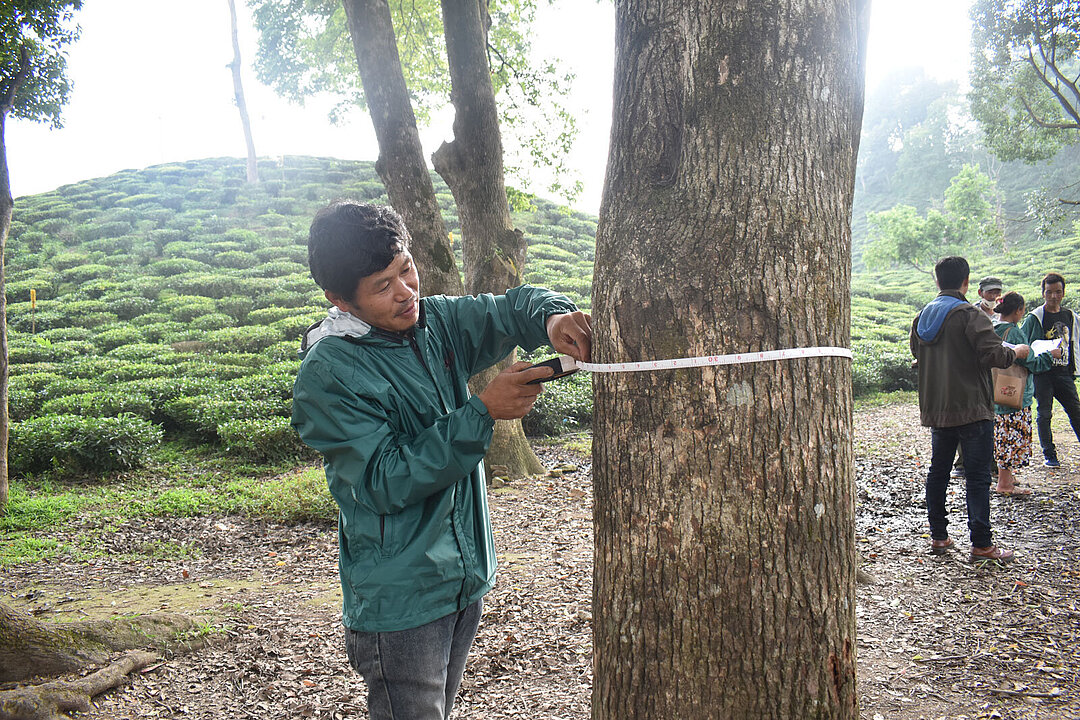
Asia, the largest of all continents, has a wide variety of habitats, from permanent ice to vast forests to gigantic mountains - the flora and fauna is just as diverse. However, it is also the most densely populated continent. As a result, its biodiversity is under threat primarily from habitat destruction, poaching and illegal wildlife trade.
Conservation breeding programme for endangered songbirds in Indonesia
With the revamping of the Jungle World, Hellabrunn Zoo underlines its commitment to conserve and protect Indonesian songbirds. In 2023, the zoo became one of the three core partners of the Cikananga Wildlife Center that provide technical support for conservation breeding of endangered endemic birds in Indonesia.
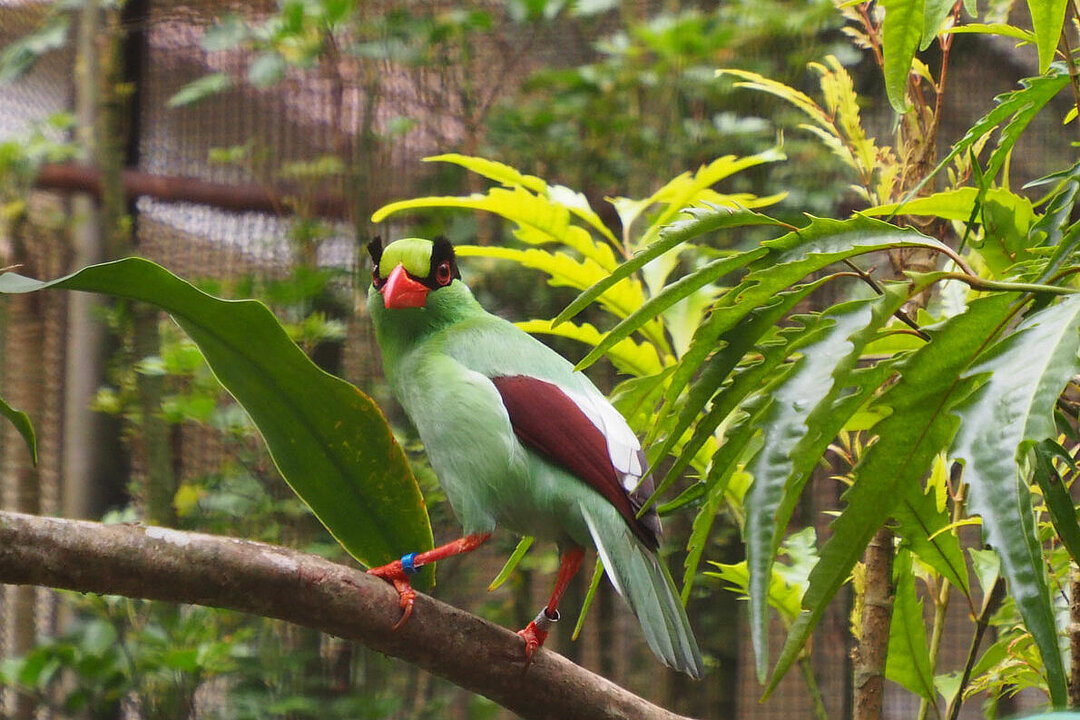
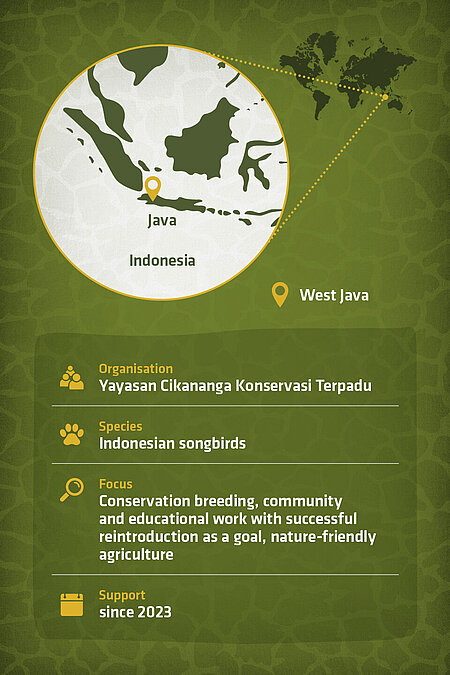
Silent forests
The songbird species in the rainforests of Southeast Asia face numerous threats. The most challenging are deforestation - to make way for monoculture plantations of energy crops such as oil palms - and the illegal wildlife trade. Owning songbirds has a long tradition in Indonesia, which has seen millions of birds captured and taken from the wild and sold. They are often kept as pets or groomed for songbird competitions, a popular and highly lucrative pastime. Poaching is so rife that the remaining wild populations are unable to replenish their numbers. With fewer and fewer songbirds left in their habitat, the forests are falling silent. Many songbirds in Asia are now threatened with extinction. The EAZA Silent Forest Campaign has been working to raise awareness of the crisis since its launch in 2017.
Path to recovery
To bring the silent forests back to life, the Cikananga Conservation Breeding Center (CCBC) works ceaselessly to breed highly endangered songbird species that are endemic to Java, such as the Javan green magpie (Cissa thalassina) and black-winged myna (Acridotheres melanopterus). After demonstrating good breeding success with the birds, Cikananga is now ready for the next step – reintroduction. This is not that easy, because the team not only have to find a suitable release site, but also make sure that the birds do not end up right back on the illegal wildlife market! The best way to prevent this is by raising awareness among the population. The Cikananga team talk to local poachers, work with the community to develop alternative income opportunities and educate the children about the need to protect the unique beautiful nature on their doorstep.
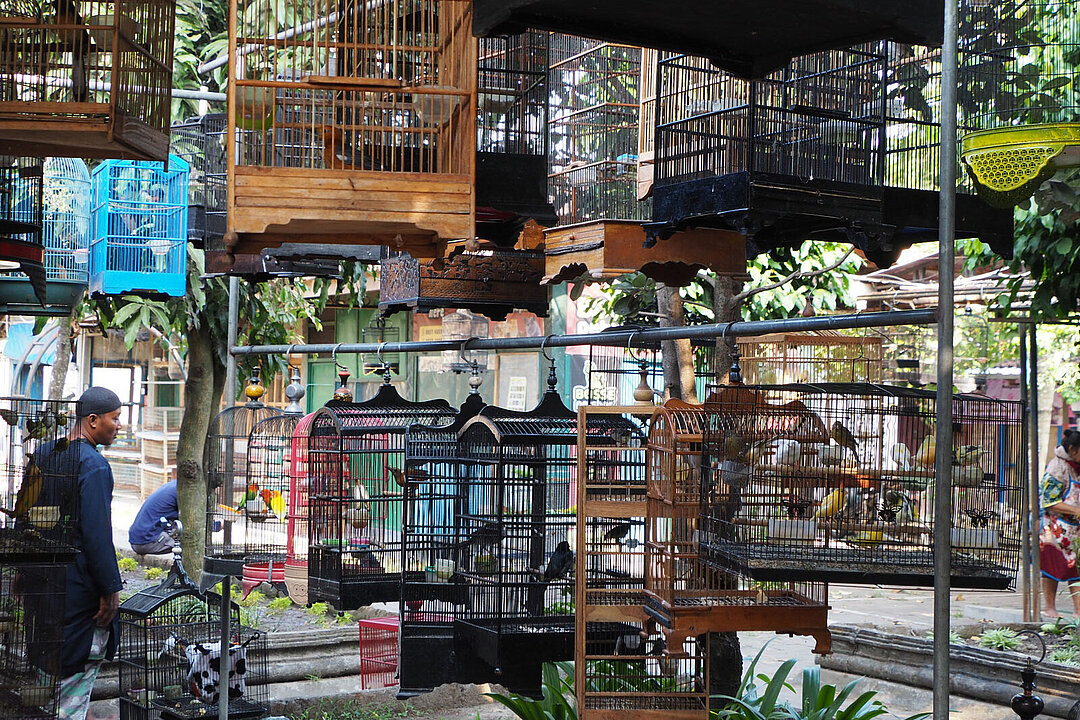
Sustainable agriculture
In order to meet the animals' dietary needs, Cikananga has an insect breeding facility and a sustainable farm. It makes its own compost by combining manure and leftover feed. This compost is then added to various fodder plant beds. It places an emphasis on crop rotation and mixed culture when selecting plants for cultivation – just like in our Cottage Garden in the Mühlendorf. And in addition to growing feed, the centre aims to share its knowledge and experience of sustainable cultivation methods with local farmers. The more farms in the region that switch to sustainable farming, the better and healthier it is for the population, the wildlife and nature.
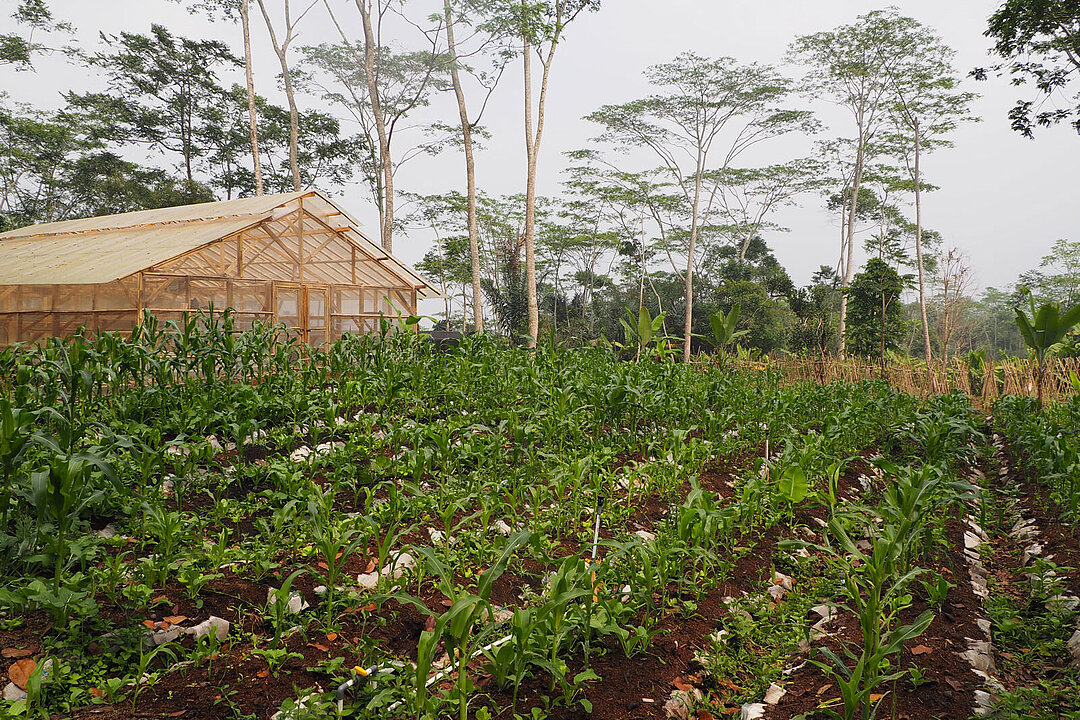
Conservation and reintroduction at Bukit Tiga Puluh National Park
Hellabrunn Zoo supports a project by the Frankfurt Zoological Society (FZS), which operates a reintroduction station in the Bukit Tigapuluh National Park on the island of Sumatra. Founded in 1995, the national park has one of the largest remaining contiguous lowland rainforests on the island. Its unique ecosystem provides a home for all the large mammal species of Sumatra: Sumatran elephants, Sumatran tigers, Malaysian tapirs and Sumatran orangutans.
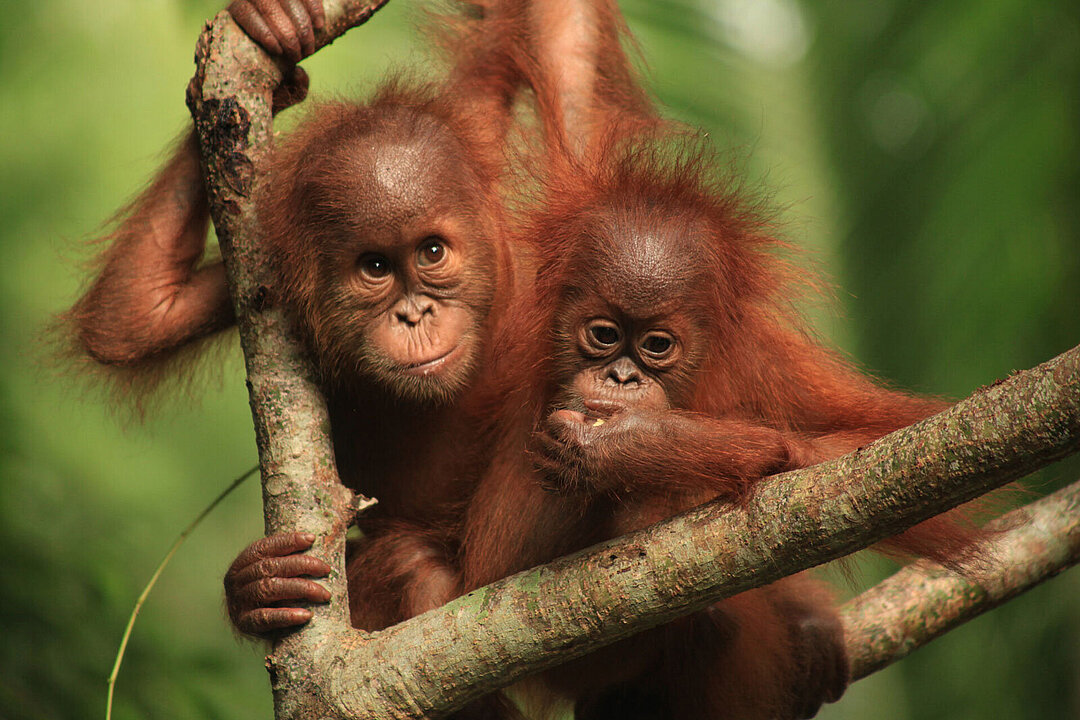
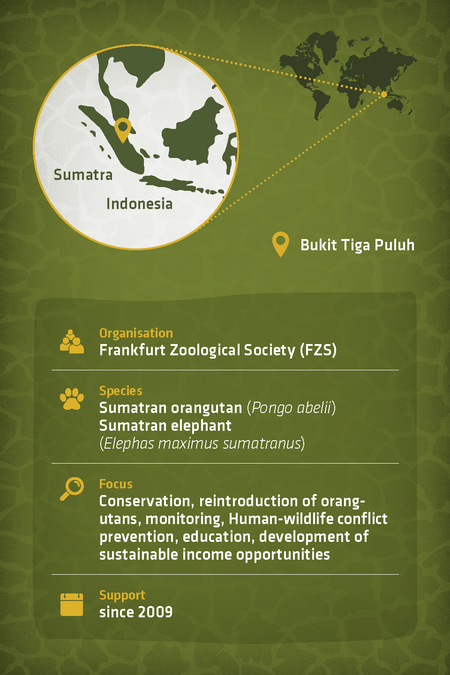
Together for nature conservation
At the heart of the project is the protection of the lowland rainforests in Bukit TigaPuluh from slash-and-burn and deforestation, which are implemented to make way for oil palm and acacia plantations. The reintroduction of Sumatran orangutans into the national park aims to establish a lifeboat population from the wild population in the north of the island. The project also raises awareness among the local community about the value of Bukit Tigapuluh’s unique ecosystem by supporting initiatives for sustainable agriculture development, human-wildlife conflict prevention and environmental education projects in schools.
From jungle school into the wild
At jungle school, confiscated and orphaned orangutans learn everything they need to know about survival in the forest - from tree climbing, to what plants they can eat, to how to build a sturdy nest. After about two years, they are brought to the reintroduction station, where they are released into the adjacent national park. There they will undergo a period of observation until they have become fully accustomed to life in the jungle and can survive on their own. To date, the project has reintroduced more than 175 orangutans into the national park. With the first births in the wild, there is hope that a new orangutan population can be established.
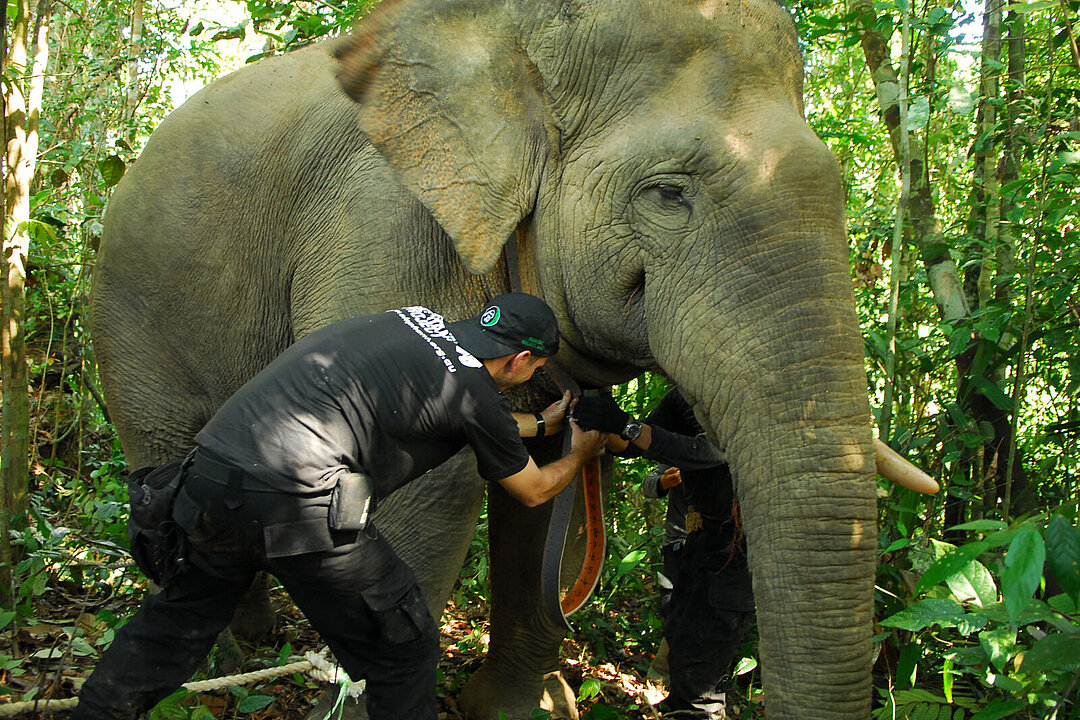
Living alongside the grey giant
The Sumatran elephant, a subspecies of the Asian elephant, is listed as critically endangered. Fewer the 2,000 individuals remain in the wild, living in fragmented populations across the island. Their shrinking habitat means that the elephants are increasingly encroaching on human settlements and fields. To mitigate conflict, FZS has an anti-conflict team that monitors the elephant population in BukitTigapuluh to prevent encounters between humans and elephants. The team advises the neighbouring communities on how to deal with wild elephants and avoid crop damage caused by elephants. Local schoolchildren also are taught about elephants and other wild animals and the importance of the rainforest.
Research and collaboration to protect the Pallas's cat
Hellabrunn Zoo is one of the main sponsors of the Pallas's cat International Conservation Alliance (PICA), a research project dedicated to improving knowledge about the secretive Pallas's cat in its natural habitat and raising global awareness about the species.

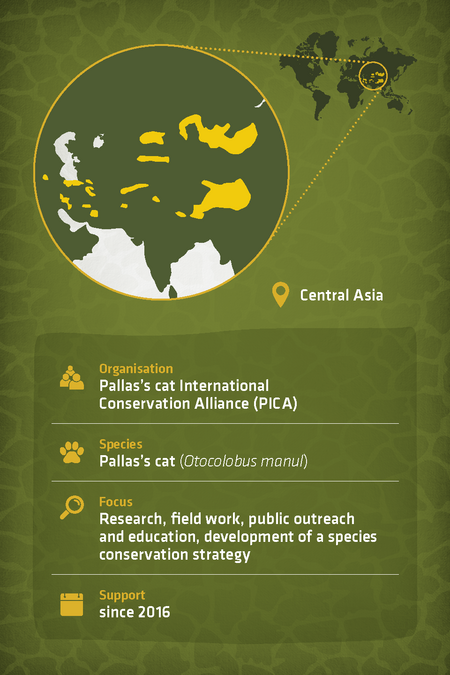
Secret mountaineer
Relatively little is known about the Pallas’s cat, also called manul. The small wild cat is native to the rocky steppes and highlands of Central Asia. It is extremely shy which makes it difficult to determine the exact population numbers. One of PICA's goals is to expand its research on the species. The organisation therefore supports field work in Nepal, Mongolia, Kazakhstan, Uzbekistan, Kyrgyzstan, Bhutan, Pakistan and Iran.
Modern technology and surveys
The research projects funded by PICA rely primarily on two methods for monitoring the population: To improve the effectiveness of camera traps, the PICA team is testing olfactory and auditory stimuli in multiple locations designed to attract Pallas’s cats to areas covered by the wildlife cameras; extensive surveys of local shepherds is another method used to obtain a better picture of the distribution of the wild cat.
Working together for the Pallas’s cat
The organisation includes field researchers in Asia as well as experts from various European zoos and institutions. All partners are committed to the goal of working together to develop a common conservation strategy for the Pallas’s cat and implementing it at national and international levels.
Forest communities protect the red panda and its habitat in Nepal
Red Panda Network (RPN) is a non-profit organisation dedicated to the protection of the red panda and its habitats through a holistic approach. RPN‘s projects include the Forest Guardian programme, which Hellabrunn Zoo gladly supports.
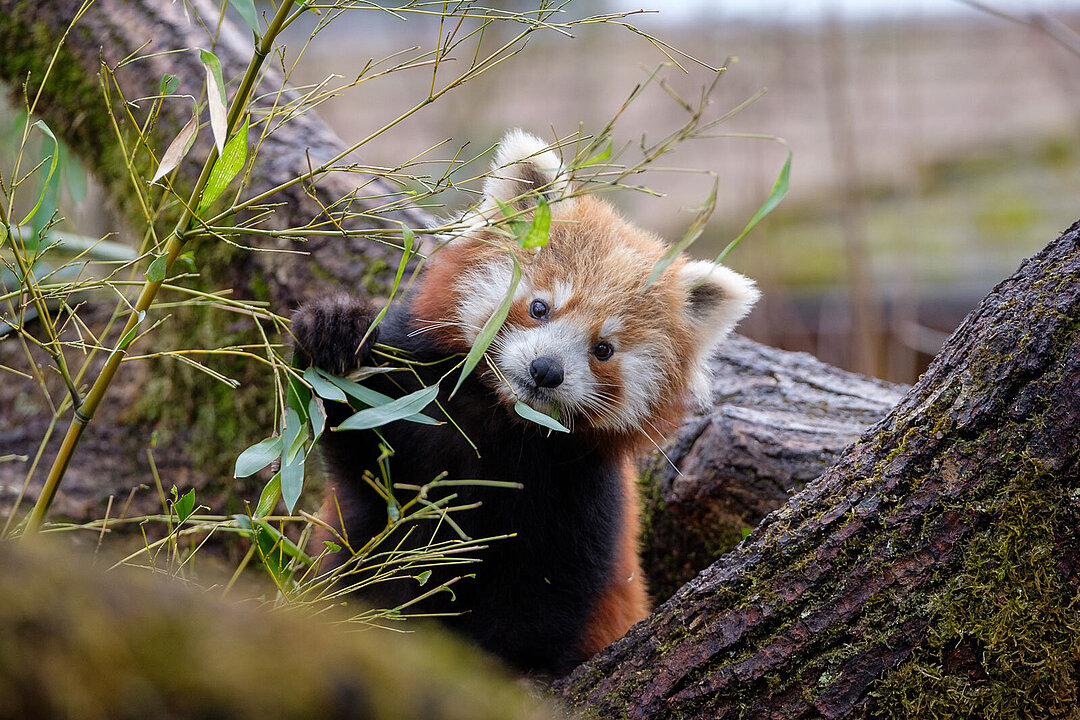
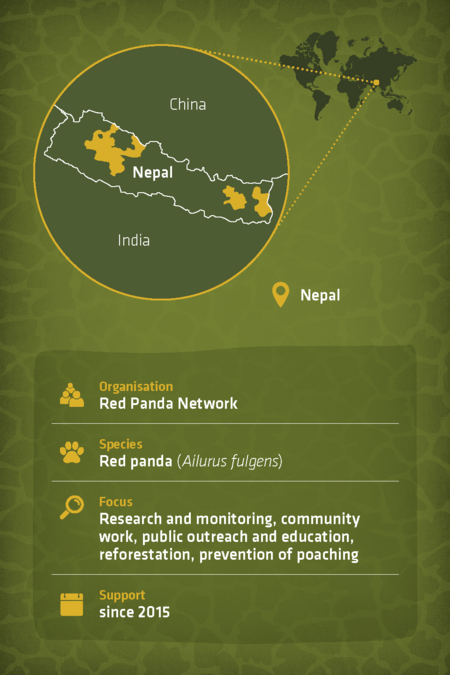
Red panda decline
The red panda, also known as the lesser panda, is listed as endangered on the IUCN Red List. The species faces many threats, which have seen the global population decline by 50% in the last 20 years (since 1999). The reasons for this are:
- Habitat loss and fragmentation (one of the main threats)
- Stray dogs transmitting diseases to the red pandas
- Illegal poaching and wildlife trade
- Extreme weather events and the resulting change in mountain vegetation caused by climate change
Holistic species conservation
Tackling all of these issues requires a holistic approach. Red Panda Network therefore works with local communities to fulfil its mission to save the red panda. Its Forest Guardian programme trains men and women to effectively monitor and protect the local red panda population. The guardians patrol their areas four times a year, noting indirect and direct red panda sightings and passing the information on. The valuable data they provide is then used to improve species conservation measures. Red Panda Network also invests a lot of time and effort in environmental education in the Himalayan region and worldwide to raise awareness of the importance of protecting the red panda.
